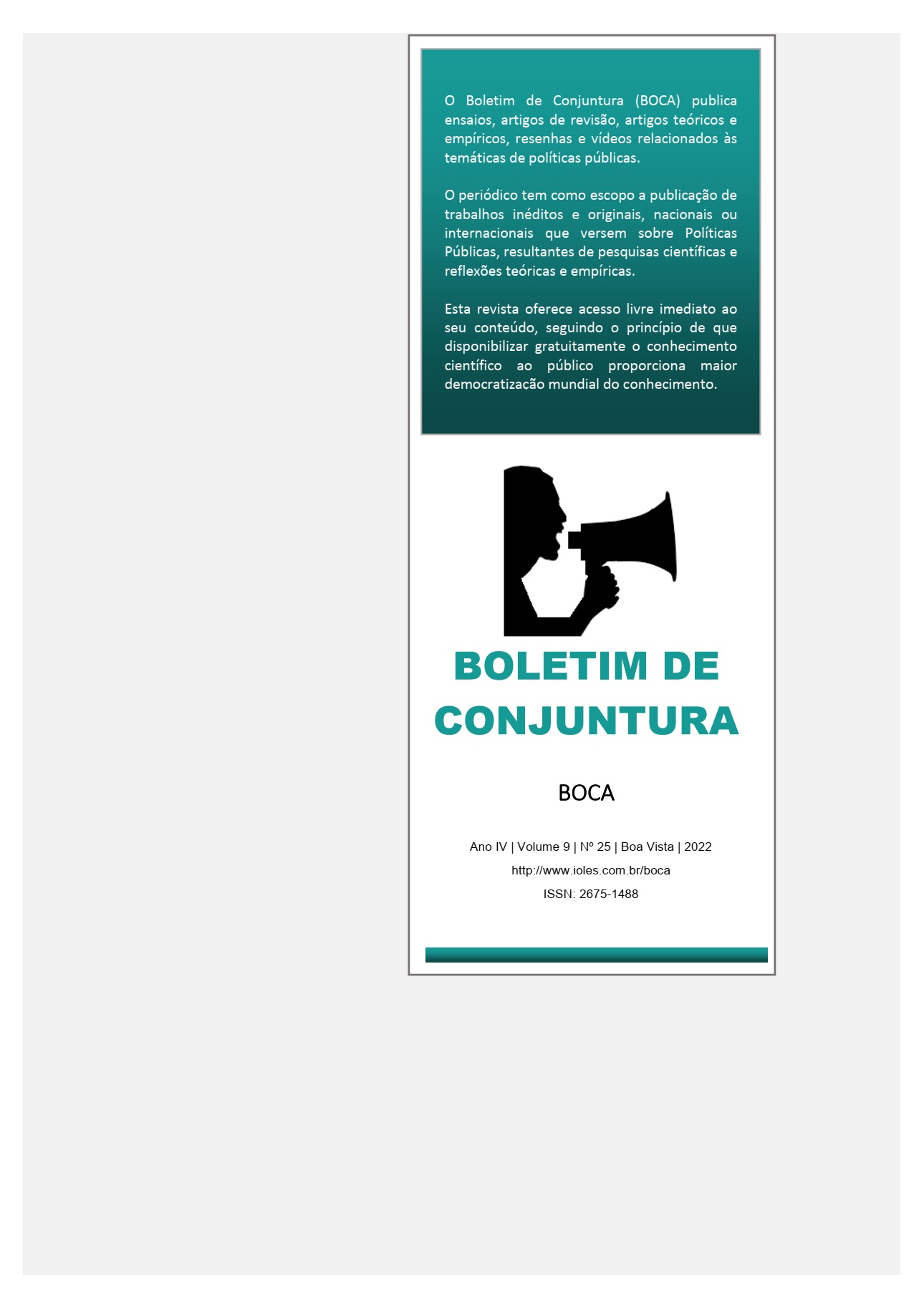CROSS-CULTURAL ADAPTATION AND EVIDENCE OF THE VALIDITY OF THE COMPETENCE AND SOCIABILITY SCALE OF THE STEREOTYPICAL CONTENT MODEL FOR USE IN BRAZIL
Main Article Content
Abstract
The Stereotype Content Model hypothesizes that there are two fundamental dimensions (Competence and Warmth) for understanding stereotypes. The purpose of the study was to realize the cross-cultural adaptation of this scale and identify its psychometric properties for the Brazilian population in an exploratory level. METHODS: All cross-cultural adaptation procedures followed the recommendations by Borsa et al. (2012). The final version of the cross-culturally adapted scale was administered to a sample of 354 adult subjects from the general population of residents in Brazil, most of whom were female (74%; N = 262) and the average age of the sample was 43.25 years (SD = 14,04). To identify the psychometric properties, Exploratory Factor Analysis (EFA) was performed in the FACTOR software. The EFA was implemented using the Robust Diagonally Weighted Least Squares (RDWLS) estimation technique. The decision on the number of factors to be retained was taken using the Optimal Implementation of Parallel Analysis technique. The rotation used was Robust Promin in all analyzes with more than one factor. To analyze the internal consistency of each dimension, the Composite Reliability coefficient was used. RESULTS: After the cross-cultural adaptation, the committee of judges considered that the Portuguese version of the scale presented semantic, idiomatic, cultural and conceptual equivalence. The EFA confirmed the 2 dimensional structure, as originally proposed, explaining 25.5% of the total variance. The internal consistency indexes were satisfactory: Composite Reliability showed a coefficient of 0.919 for Factor 1 (Competence) and 0.890 for Factor 2 (Sociability), while Cronbach's α showed a coefficient of 0,87. The adjustment indices for the exploratory analysis of the instrument were adequate (χ2 = 229,939, gl = 43; p < 0,001; CFI = 0,967; TLI = 0,950) with the exception of RMSEA = 0.111, which was considered poor (above 0.100). CONCLUSIONS: The cross-cultural adaptation and the exploratory psychometric qualities of the Competence and Warmth scales of the Stereotype Content Model were satisfactory.
Article Details

This work is licensed under a Creative Commons Attribution 4.0 International License.
Copyright (c). Conjuncture Bulletin (BOCA)
This work is licensed under a Creative Commons Attribution 4.0 International License.
References
AMBIEL, R. A. M. et al. “E viveram felizes para sempre: a longa (e necessária) relação entre psicologia e estatística”. In: AMBIEL, R. A. M. et al. (eds.). Avaliação Psicológica: guia de consulta para estudantes e profissionais de psicologia. Perdizes: Editora Casa do Psicólogo, 2011.
ASPAROUHOV, T.; MUTHÉN, B. Simple second order chi-square correction. Los Angeles: Muthén and Muthén, 2010.
BAKER, A.; FLORACK, A. “Uncovering men’s stereotype content (warmth and competence) associated with a representative range of male body size categories”. Body Image, vol. 37, 2021.
BORSA, J. C. et al. “Adaptação e validação de instrumentos psicológicos entre culturas: algumas considerações”. Revista Paidéia, vol. 22, n. 53, 2012.
BRASIL. Resolução n. 466, de 12 de dezembro de 2012. Brasília: Ministério da Saúde, 2012. Disponível em: . Acesso em: 02/01/2021.
BRASIL. Resolução n. 510, de 07 de abril de 2016. Brasília: Ministério da Saúde, 2016. Disponível em: . Acesso em: 02/01/2021.
BROWN, T. Confirmatory Factor Analysis for Applied Research. New York: Guilford Press, 2015.
DAMÁSIO, B. “Análise Fatorial e Modelagem por Equações Estruturais”. Psicometria Online Academy. [2021]. Disponível em: . Acesso em: 02/04/2023
FERRANDO, P. J.; LORENZO-SEVA U. “Assessing the quality and appropriateness of factor solutions and factor score estimates in exploratory item factor analysis”. Educational and Psychological Measurement, vol. 78, n. 5, 2018.
FISKE, S. T. et al. “A model of (often mixed) stereotype content: Competence and Warmth respectively follow from perceived status and Competition”. Journal of Personality and Social Psychology, vol. 82, n. 6, 2002.
GORSUCH, R. L. Factor analysis. Lawrence: Erlbaum Associates Inc, 1983.
HAIR, H. J. “Exploratory factor analysis: A review of research from 1993 to 2003”. Journal of Managment, vol. 14, n. 4, 2005.
HUTCHESON, G.; SOFRONIOU, N. The Multivariate Social Scientist: Introductory Statistics Using Generalized Linear Models. London: Sage Publications, 1999.
LORENZO-SEVA, U. et al. “The Hull method for selecting the number of common factors”. Multivariate Behavioral Research, vol. 46, n. 2, 2011.
LORENZO-SEVA, U.; FERRANDO, P.J. “Robust Promin: a method for diagonally weighted factor rotation”. Liberabit, vol. 25, n. 1, 2019.
MARDIA, K. V. “Measures of multivariate skewnees and kurtosis with applications”. Biometrika, vol. 57, n. 3, 1970.
RECKASE, M. D. “The difficulty of test items that measure more than one ability”. Applied Psychological Measurement, vol. 9, n. 4, 1985.
TABACHNICK, B. G.; FIDELL, L. S.; ULLMAN, J. B. Using multivariate statistics. Sydney: Pearson, 2007.
TIMMERMAN, M. E.; LORENZO-SEVA, U. “Dimensionality Assessment of Ordered Polytomous Items with Parallel Analysis”. Psychological Methods, vol. 16, n. 2, 2011.
TOEWS, K.; CUMMINGS, J. A.; WILLIAMSON, L. E. “Warmth, competence, and blame: examining mothers of sexually abused children within the stereotype content model”. Journal of interpersonal Violence, vol. 36, n. 11-12, 2021.
TORRES, C. V.; NEIVA, E. R. Psicologia social. Porto Alegre: Editora Artmed, 2011.
WU, A. D.; ZUMBO, B. D. “Using Pratt’s Importance Measures in Confirmatory Factor Analyses”. Journal of Modern Applied Statistical Methods, vol. 16, n. 2, 2017.


